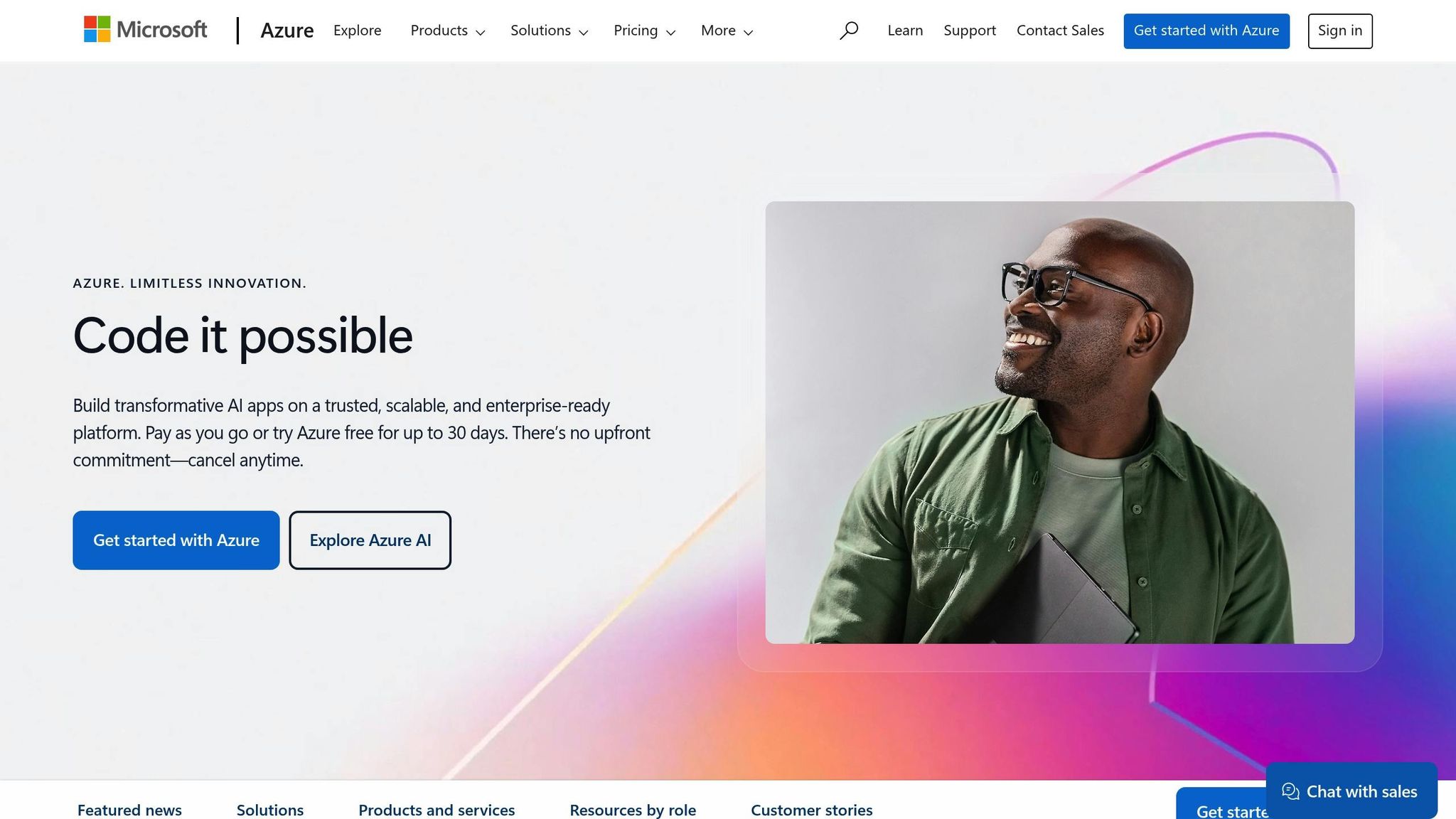Azure Migration Checklist for SMBs
This checklist guides SMBs through the essential steps for a successful Azure migration, ensuring cost efficiency and enhanced security.

Migrating to Azure can boost your business by cutting costs, scaling easily, and improving security. Here’s a quick guide to get started:
- Assess Your IT Setup: List all hardware, software, and network components. Monitor usage for 30 days and check Azure compatibility with tools like Azure Migrate.
- Plan Your Migration: Set clear goals (e.g., cost reduction, uptime targets), estimate costs using the Azure Pricing Calculator, and prioritise workloads by complexity and impact.
- Prepare Azure Platform: Organise resources with clear naming conventions, set up secure networks, and configure access controls using Azure Active Directory.
- Test Before Moving: Use sample data to validate systems, ensure backups work, and train your team on Azure operations.
- Migrate in Phases: Start with non-critical systems, monitor performance, and fine-tune settings for cost and efficiency.
Seven steps for a successful Azure migration

1. Review Current IT Environment
Evaluate your IT setup to identify any hurdles and opportunities for a smooth migration to Azure. Start by listing and analysing your resources.
List All IT Assets
Create an inventory of all your hardware, software, and data. Include:
- Server Infrastructure: Physical and virtual servers, operating systems, and their specifications.
- Applications: Critical business software, development tools, and custom-built applications.
- Databases: Types, sizes, and any dependencies.
- Network Components: Firewalls, load balancers, and connectivity needs.
Make sure to map out system dependencies to avoid disruptions during the migration process.
Monitor System Usage
Understanding how your current resources are used can help you allocate Azure resources efficiently and manage costs. Focus on these key metrics:
| Resource Type | Monitoring Metrics | Purpose |
|---|---|---|
| Servers | CPU, Memory, Storage | Identify suitable VM sizes |
| Network | Bandwidth, Latency | Plan for adequate network capacity |
| Applications | Peak Usage Times, User Load | Set up auto-scaling configurations |
Track these metrics for at least 30 days to establish a reliable usage baseline.
Check Azure Compatibility
Use Azure Migrate to evaluate compatibility. This tool provides:
- Compatibility Reports: Detailed insights into which systems can move directly to Azure and which may need adjustments.
- Migration Recommendations: Tailored suggestions for Azure services and configurations based on your current setup.
- Cost Estimates: Predicted Azure expenses based on your resource usage.
Run these checks on all systems planned for migration, paying close attention to legacy and custom software. These may need updates or modifications before they can be moved to Azure.
2. Create Migration Plan
Build a migration plan that aligns with your business goals and resource constraints. Use your IT review to define clear objectives and allocate resources effectively.
Set Migration Targets
Define measurable goals for your Azure migration by focusing on key areas:
| Target Area | Measurement Criteria | Example Target |
|---|---|---|
| Cost Optimisation | Monthly IT expenditure | Cut infrastructure costs by 25% within six months |
| Performance | System response time | Ensure 99.9% uptime for critical applications |
| Scalability | Resource utilisation | Enable auto-scaling for 40% peak demand periods |
| Security | Compliance standards | Meet ISO 27001 security compliance requirements |
Include these goals in your migration plan and schedule regular reviews to monitor progress.
Calculate Total Costs
Perform a detailed cost assessment using the Azure Pricing Calculator to avoid unexpected expenses. Factor in:
-
Direct Azure Costs:
- Virtual machines and storage
- Network bandwidth and data transfer
- Backup and disaster recovery
- Security and monitoring solutions
-
Migration-Related Expenses:
- Staff training and certifications
- Third-party migration tools
- Temporary parallel environments
- A contingency buffer (suggested at 15% of the total budget)
For additional cost-saving strategies, check out Azure Optimisation Tips, Costs & Best Practices (azure.criticalcloud.ai).
Rank Migration Tasks
Organise workloads based on their business importance and complexity. Use the following framework to prioritise:
| Priority Level | Workload Type | Migration Approach |
|---|---|---|
| High | Low complexity, high impact | First wave - Quick wins |
| Medium | Low complexity, low impact | Second wave - Steady progress |
| Low | High complexity, low impact | Final wave - Extended timeline |
| Critical | High complexity, high impact | Separate track with dedicated resources |
Start with workloads that provide the best mix of low risk and high value. For instance, migrate development and testing environments first before moving to production systems.
3. Set Up Azure Platform
Once your migration plan is ready, the next step is to configure your Azure environment to bring it to life.
Structure Resource Groups
Organise your Azure resources systematically by creating a clear structure. Stick to a consistent naming convention that mirrors your business framework. For small and medium-sized businesses (SMBs), grouping resources by their function often works well. Here's an example:
| Resource Group Type | Naming Format | Example |
|---|---|---|
| Environment-based | env-region-purpose | prod-ukw-network |
| Function-based | function-region-service | security-uks-monitoring |
| Application-based | app-env-region | crm-dev-ukw |
You can also use tags like BusinessUnit, CostCentre, Environment, Owner, and SecurityLevel to keep track of costs and manage resources efficiently.
Set Up Network Settings
Design your network with clear subnet segmentation to ensure smooth operations.
-
Create Virtual Networks
A typical setup for SMBs might look like this:
Environment Address Space Subnet Range Purpose Production 10.0.0.0/16 10.0.1.0/24 Primary workloads Development 172.16.0.0/16 172.16.1.0/24 Testing and development Management 192.168.0.0/16 192.168.1.0/24 Administrative access - Implement Security Measures Protect your resources by deploying Network Security Groups (NSGs) to control traffic flow. For applications exposed to the internet, consider using Azure Firewall for advanced threat protection.
Once your network is secure, focus on managing user access effectively.
Configure Access Controls
Leverage Azure Active Directory to manage identity and access. Always follow the principle of least privilege when assigning permissions. For example:
| Access Level | User Type | Permissions |
|---|---|---|
| Global Admin | IT Managers | Full platform access |
| Resource Admin | Team Leaders | Resource group management |
| Developer | Development Staff | Development environment access |
| Read-only | Support Staff | Monitoring and logs access |
To enhance security, enable Multi-Factor Authentication (MFA) for all users. Use Conditional Access policies to restrict logins based on factors such as:
- Location
- Device compliance
- Risk level
- Time of day
Additionally, activate Azure AD Identity Protection to detect and respond to potential threats proactively.
For more detailed guidance on setting up and optimising your Azure platform, check out Azure Optimization Tips, Costs & Best Practices.
4. Test Before Migration
Run tests in a controlled setup to spot any problems with data accuracy, performance, or system compatibility.
Test with Sample Data
Set up a test environment that matches your planned Azure configuration. Start by migrating a small portion of your data and less critical applications. Check for issues with data accuracy, system functionality, integrations, and security. Use what you learn to adjust and improve your migration plan.
Check Backup Systems
Ensure your backup systems are functioning properly before starting the migration. Set up a primary backup solution that meets your business needs. For added safety, think about secondary options like geographic replication or point-in-time recovery. Regularly test your recovery processes to confirm backups can be restored when needed.
Train Your Team
Make sure your staff are prepared for the transition. Provide training on Azure operations, troubleshooting, security measures, and handling emergencies. Maintain clear communication channels and document all training sessions. Focus on:
- Basic Azure operations for all employees
- Migration tools and troubleshooting for IT teams
- Security practices for system users
- Emergency protocols for support staff
Once testing is done, you can move on to migrating your systems in stages and fine-tuning the setup in the next steps.
5. Migrate and Fine-tune
After testing, it's time to carry out the migration and make adjustments step by step.
Move Systems in Phases
To reduce disruptions, start with less critical systems. Begin with development environments and test servers, then move on to production systems. Plan the migration sequence based on how systems depend on each other and their importance to your operations.
| Migration Phase | Systems to Move | Monitoring Focus |
|---|---|---|
| Phase 1 | Development environments, test servers | Connectivity and basic functionality |
| Phase 2 | Internal tools and documentation systems | Data integrity and user access |
| Phase 3 | Customer-facing applications and databases | Performance, security, and availability |
Once the systems are migrated, shift your attention to refining Azure settings.
Fine-tune Azure Settings
Adjust your Azure setup to balance performance and cost. Use tools like Azure Cost Management to monitor expenses and Azure Advisor for improvement tips.
Focus on these areas for optimisation:
- Review CPU and memory usage to ensure virtual machines (VMs) are appropriately sized.
- Set up auto-scaling to handle varying workloads efficiently.
- Apply lifecycle policies to manage storage effectively.
For more detailed tips tailored to small and medium businesses, check out Azure Optimization Tips, Costs & Best Practices.
Validate Results
After migration, evaluate the outcomes by tracking key metrics:
| Metric Category | What to Monitor |
|---|---|
| Performance | Response times and throughput |
| Costs | Monthly spending and resource usage |
| Availability | Uptime and error rates |
Monitor these metrics over a 30-day period using Azure Monitor. Configure alerts to catch any unusual activity.
Collect feedback from users on system performance, address any issues quickly, and document solutions for future reference.
Conclusion
Migrating to Azure successfully requires thoughtful planning and precise execution, especially for SMBs aiming to maximise the advantages of cloud computing. Using a detailed checklist can help businesses sidestep common mistakes and ensure a smooth transition.
Start with a full IT assessment and a well-defined migration plan. This sets the groundwork for a secure, scalable Azure setup. Testing is equally crucial - use sample data to validate systems and confirm backup processes before the actual migration. Adopting a phased migration strategy, starting with development environments and gradually moving to production, helps maintain business operations without major disruptions.
Here are key areas to focus on:
| Success Factor | Key Consideration | Impact |
|---|---|---|
| Infrastructure Assessment | Complete inventory of IT assets and dependencies | Avoids missed systems and compatibility problems |
| Cost Management | Detailed calculation of migration and operational costs | Prevents budget overruns and unexpected expenses |
| Staff Preparation | Comprehensive training and clear communication | Ensures smooth adoption and boosts productivity |
Take advantage of Azure's built-in tools for cost control and performance tracking to maintain efficiency after the migration.
By sticking to this structured approach - emphasising testing, validation, and phased implementation - SMBs can achieve a successful Azure migration, paving the way for long-term growth with reduced risks.
For further insights, check out Azure Optimization Tips, Costs & Best Practices.
FAQs
What are the main advantages of migrating to Azure for small and medium-sized businesses (SMBs)?
Migrating to Azure offers SMBs several key benefits that can help streamline operations and support growth. Azure provides scalability, allowing businesses to adjust resources as needed, whether scaling up during busy periods or reducing costs during quieter times. This flexibility ensures you only pay for what you use.
Azure also prioritises security and compliance, offering advanced tools to protect your data and meet regulatory requirements, which is particularly important for businesses handling sensitive information. Additionally, it integrates seamlessly with Microsoft tools like Office 365, enhancing collaboration and productivity.
For SMBs looking to optimise costs and improve performance, exploring Azure optimisation tips, costs, and best practices can provide valuable insights into maximising the platform's potential while staying within budget.
How can small and medium-sized businesses (SMBs) check if their current IT systems are compatible with Microsoft Azure before migrating?
To ensure your existing IT systems are compatible with Microsoft Azure, start by conducting a thorough assessment of your infrastructure. This includes evaluating your hardware, software, and applications to identify any potential compatibility issues. Use tools like the Azure Migrate service, which provides a detailed analysis of your systems, including readiness reports and migration recommendations.
Additionally, ensure your operating systems, databases, and applications meet Azure's requirements. Check for any necessary updates or upgrades that may be required before migration. Collaborating with an experienced Azure partner or consultant can also help streamline the process and address any challenges specific to your setup.
How can SMBs effectively manage and optimise costs during and after migrating to Azure?
Managing and optimising costs on Azure is crucial for SMBs to ensure they get the most value from their cloud investment. Start by monitoring your usage through Azure’s built-in tools, such as Azure Cost Management, to track and analyse spending patterns.
To reduce unnecessary expenses, consider scaling resources dynamically based on demand, using reserved instances for predictable workloads, and leveraging Azure Hybrid Benefit if you already have existing licences. Additionally, regularly review and right-size your resources to avoid paying for unused capacity.
For long-term success, establish a cost governance framework and train your team to follow best practices. This proactive approach can help you maintain control over your budget while maximising performance and scalability.




